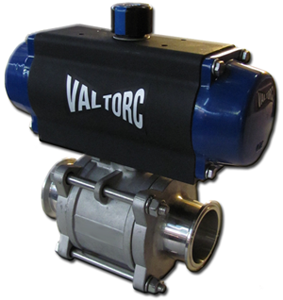DIFFERENCE BETWEEN AN ELECTRIC AND PNEUMATIC ACTUATOR
 Electric as well as pneumatic actuators are quite well known for their varied uses. In case you are confused as to which type of actuator out of these two will suit your needs, then we are there to help you.
Electric as well as pneumatic actuators are quite well known for their varied uses. In case you are confused as to which type of actuator out of these two will suit your needs, then we are there to help you.
An electric actuator is the one which makes use of electrical energy to produce mechanical energy. While, a pneumatic actuator, is an air operated actuator, which converts air pressure into mechanical force to operate the valve.
Read on to find the basic points of difference between an electric and pneumatic actuator.
- High force & speed – When it comes to the force and speed of the pneumatic actuators, then it is worthwhile to note that they offer more force and speed per unit size than the electric actuators. One can easily adjust the force and speed on the pneumatic actuators. Thus, for those of you who need to control and regulate the force and speed in the system, should go for pneumatic actuators without any doubt.
- Component cost – If you are considerate about the component costs of pneumatic actuators, then you would be glad to know that they are low. The electric actuators come with a hefty component costs, and are thus often avoided by the users.
- Operating cost – Regardless of the low component costs of pneumatic actuators, their maintenance and operating costs are quite high as compared to the electric actuators. These costs consist of replacement costs of the cylinders, electricity charges, airline installation and maintenance, etc.
- Heating – Owing to their perfect design that resists overheating, the pneumatic actuators are favored by many. In contrast, the electric actuators can tend to overheat. So, if you want an actuator that does not overheat easily, then go for the pneumatic one.
- Moisture – Another point of difference between these two types of actuators is their resistance to moisture. While the pneumatic actuators are insensitive to wet environment or moisture, the electric actuators need to keep well away from moisture.
- Stalling – When it comes to the pneumatic actuators, they can be stalled easily. But, the electric ones cannot be stalled during their operation or use.
- Torque to weight ratio – The pneumatic actuators have a high torque to weight ratio as compared to the electric actuators.
Thus, keep all these points in mind and go for that actuator that suits your requirements the best. After all, investing in these tools is not an easy decision to make! So, consider all the points of differences and opt for the right actuator.
